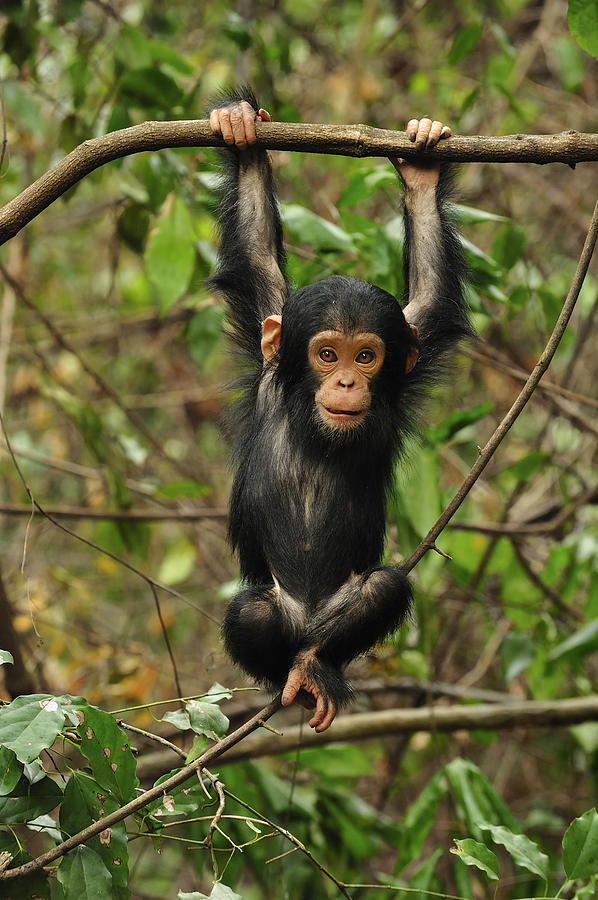
As a result, all chimpanzees are protected by national and international laws, but enforcement remains an ongoing problem. Today, western chimpanzees are critically endangered due to the loss of their habitat by deforestation and the expansion of human agriculture. However, both sexes will adopt orphan infants. A female gives birth after eight months of gestation to a single infant, which the mother will take care of until it reaches around four years old. Females often team up with each other in conflicts with males.īoth males and females mate with multiple partners throughout their lifetime. Unlike other chimpanzee species, western chimpanzees live in a more gender-balanced hierarchy than in a patriarchal society. Washoe, a wild-born chimp who lived with two researchers from the University of Nevada for a time, learned 350 signs and passed them down to her son. While it is uncertain why western chimpanzees do this, it has been theorized by their seemingly competitive nature in the act that it is a type of sport.įurthermore, western chimpanzees have been successfully taught sign language. They have also been known to throw large rocks into hollow tree stumps or against trees. They seem to enjoy the drink and its intoxicating effects because when an alcohol source is discovered, they often return to it. The chimpanzees have also been observed collecting fermented alcoholic sap from palm trees in leaves. When sick, they eat certain types of leaves to settle their stomachs and kill parasitic worms. Western chimpanzees have been observed using plants as medicine.


Adult male chimpanzee uses tree branch with modified end to (a–c) stab into a cavity within a hollow tree branch that houses a Galago he ultimately captures as (d) his adolescent brother looks on. Tool-assisted hunting by chimpanzee at Fongoli, Sénégal. With such an expansive diet, this species serves as a top predator, seed disperser, and pest control in their ecosystem. Both sexes have been known to hunt bushbucks.Īdditionally, western chimpanzees feed on termites and ants, using tools to scoop the insects out of their nests. Senegal bushbabies account for 75% of females' prey and are the only western chimpanzees observed to hunt banded mongooses. Males prey more on other primates, such as green monkeys, patas monkeys, and Guinea baboons. Another unique quality of their hunting is that male and female western chimpanzees differ in their prey.
EASTERN CHIMPANZEE HOW TO
Western chimpanzees use wooden spears for hunting and teach younger chimpanzees how to make and operate them successfully. Over half of their diet comprises fruit, while the other half is dedicated to hunting prey. Omnivorous, western chimpanzees have a set of teeth adapted to both grinding plants and tearing meat. While this species is not that visually different from the central and eastern chimpanzees, western chimpanzees have been isolated for over half a million years and are now genetically and behaviorally very distinct. Females are slightly smaller, with a length of about 70–91 centimeters (27.5–36 in) and a weight of 41.6 kilograms (92 lb).īlack hair covers their entire body, hands, and feet, and opposable thumbs allow for complex motor functions. Males have a head-to-rump length of 77–96 centimeters (30–38 in) and a weight of 47 kilograms (103.5 lb). Today, they are only found in Liberia, Sierra Leone, and Guinea-Bissau, with the largest population in Côte d'Ivoire. Once, the western chimpanzee population spanned from southern Senegal east to the Niger River.

Western chimpanzees are the flagship species of the Guinean Montane Forests ecoregion, located in the West African Coastal Forests & Savanna bioregion ( AT19). The western chimpanzee ( Pan troglodytes verus), along with bonobos, share more than 98% of their DNA with humans and many of the same activities such as using tools for hunting and plants for medicinal purposes, and even rocks to play sports. Īmong the dense mountain forests of West Africa is the closest living relative of human beings.
EASTERN CHIMPANZEE SERIES
One Earth’s “Species of the Week” series highlights the flagship species of each of the 844 unique ecoregions contained within Earth’s bioregions.


 0 kommentar(er)
0 kommentar(er)
